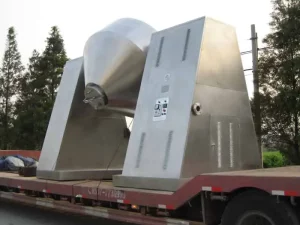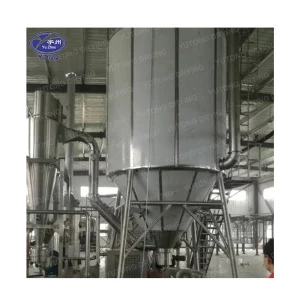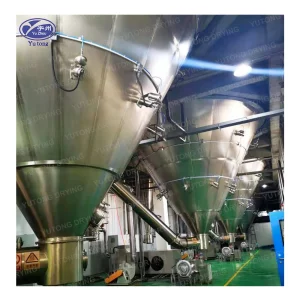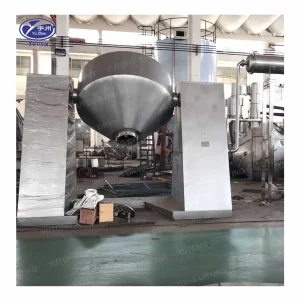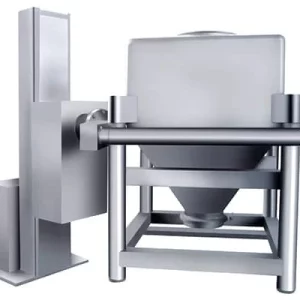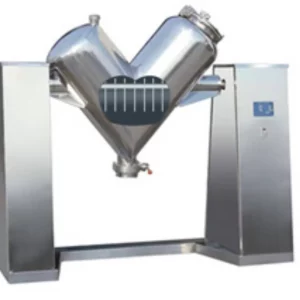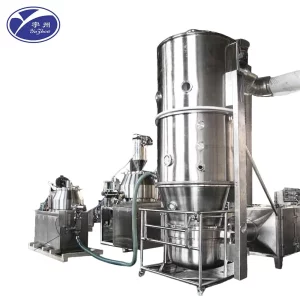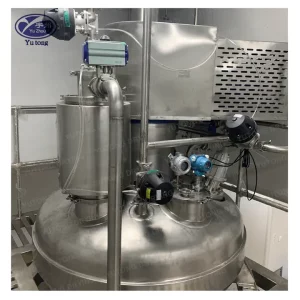Drying is a fundamental process in various industries, including pharmaceuticals, food processing, chemical engineering, and materials science. The primary goal of drying is to remove moisture or solvents from materials to achieve desired properties, such as stability, purity, and ease of handling. Among the different drying techniques available, vacuum drying stands out as a versatile and efficient method, particularly when dealing with heat-sensitive or volatile materials. In this comprehensive article, we will explore the purpose, principles, and applications of vacuum dryers, shedding light on their unique advantages and the industries that benefit from their use.
The Science Behind Vacuum Drying
Vacuum drying operates on the principle of lowering the pressure around the material to be dried, thereby reducing the boiling point of the solvent or moisture present. This reduction in boiling point facilitates faster evaporation of the solvent or moisture at lower temperatures, minimizing the risk of thermal degradation or loss of volatile compounds. The process takes place in a vacuum chamber, where the pressure is reduced using a vacuum pump, and the evaporated solvent is collected and sometimes condensed for reuse.
Purpose of Vacuum Dryers
Vacuum dryers serve multiple purposes in various industries, addressing specific challenges and requirements that cannot be met by conventional drying methods. Some of the primary purposes of vacuum dryers include:
1. Heat-Sensitive Materials: Vacuum dryers are ideal for drying heat-sensitive materials, such as biological samples, enzymes, proteins, and certain polymers, which can degrade or denature at high temperatures. By reducing the boiling point of the solvent or moisture, vacuum drying allows for gentle and efficient removal of moisture at lower temperatures, preserving the integrity and functionality of the material.
2. Solvent Recovery: In the pharmaceutical and chemical industries, solvents are often used as reaction media or extraction agents. Vacuum dryers enable the recovery and recycling of these solvents, reducing waste and minimizing the environmental impact of industrial processes. The evaporated solvent is collected and condensed, allowing for its purification and reuse in subsequent operations.
3. Improved Yield and Quality: Vacuum drying can result in higher yields and improved product quality compared to conventional drying methods. The gentle drying conditions prevent the formation of cracks or shrinkage in the material, maintaining its structural integrity and minimizing losses due to breakage or degradation.
4. Enhanced Drying Efficiency: Vacuum dryers offer enhanced drying efficiency, particularly for materials with high moisture content or those containing solvents with high boiling points. The reduced pressure environment facilitates faster evaporation rates, leading to shorter drying times and increased throughput.
5. Reduced Oxidation: In the presence of oxygen, certain materials can undergo oxidation, leading to degradation or discoloration. Vacuum drying minimizes the exposure of the material to oxygen, reducing the risk of oxidation and preserving the material’s properties.
Components of a Vacuum Dryer
A typical vacuum dryer comprises several essential components:
1. Vacuum Chamber: The vacuum chamber is a sealed vessel where the drying process takes place. It is designed to withstand the low pressures generated by the vacuum pump and is equipped with heating elements to facilitate the evaporation of the solvent or moisture.
2. Vacuum Pump: The vacuum pump is responsible for creating and maintaining the low-pressure environment inside the vacuum chamber. Common types of vacuum pumps used in vacuum dryers include rotary vane pumps, diaphragm pumps, and oil-sealed pumps.
3. Heating System: The heating system provides the necessary energy to evaporate the solvent or moisture from the material. This can be achieved through direct or indirect heating methods, such as steam, hot water, or electric heating elements.
4. Condenser: The condenser is used to cool and condense the evaporated solvent or moisture, allowing for its recovery and reuse. The condenser is typically connected to the vacuum chamber and is cooled using chilled water or other cooling media.
5. Control System: The control system monitors and regulates the various parameters of the vacuum drying process, including temperature, pressure, and drying time. It ensures optimal operating conditions and facilitates the automation of the drying process.
Applications of Vacuum Dryers
Vacuum dryers find extensive applications across various industries, driven by their unique advantages in handling heat-sensitive, volatile, or high-moisture materials. Some of the key applications of vacuum dryers include:
1. Pharmaceutical Industry: In the pharmaceutical industry, vacuum dryers are used for the drying of active pharmaceutical ingredients (APIs), intermediates, and excipients. They enable the gentle removal of solvents and moisture, preserving the potency and stability of the compounds.
2. Food Processing: Vacuum dryers are employed in the food industry for the drying of heat-sensitive products, such as fruits, vegetables, herbs, and spices. Vacuum drying preserves the color, flavor, and nutritional value of the food, making it suitable for long-term storage and transportation.
3. Chemical Engineering: In chemical engineering, vacuum dryers are used for the drying of chemical intermediates, catalysts, and pigments. They facilitate the recovery and recycling of solvents, reducing waste and minimizing the environmental impact of chemical processes.
4. Material Science: Vacuum dryers are utilized in material science for the drying of polymers, resins, and adhesives. They enable the gentle removal of moisture or solvents, preserving the mechanical and physical properties of the materials.
5. Environmental Science: In environmental science, vacuum dryers are employed for the drying of sludge, sewage, and contaminated soils. They facilitate the removal of water and other contaminants, making the materials suitable for disposal or further treatment.
Future Trends in Vacuum Dryer Technology
As technology advances, vacuum dryers continue to evolve, incorporating new features and innovations to enhance their performance and efficiency. Some of the emerging trends in vacuum dryer technology include:
1. Energy Efficiency: Advances in vacuum pump and heating system designs are leading to more energy-efficient vacuum dryers, reducing operating costs and minimizing the environmental impact of industrial processes.
2. Automation and Control: The integration of advanced control systems and sensors enables precise monitoring and regulation of the vacuum drying process, improving product quality and consistency.
3. Scalability: Modular designs and flexible configurations allow vacuum dryers to be easily scaled up or down to accommodate varying production volumes and adapt to changing process requirements.
4. Sustainable Materials: The use of sustainable materials in the construction of vacuum dryers is becoming increasingly important, as manufacturers strive to reduce their environmental footprint and comply with regulatory standards.
5. Remote Monitoring and Maintenance: The incorporation of Internet of Things (IoT) technologies enables remote monitoring and maintenance of vacuum dryers, improving system uptime and reducing maintenance costs.
Vacuum dryers serve a critical purpose in various industries, offering a gentle, efficient, and versatile drying method for heat-sensitive, volatile, or high-moisture materials. By reducing the boiling point of solvents and moisture, vacuum drying facilitates faster evaporation rates at lower temperatures, preserving the integrity and functionality of the material. With their unique advantages and wide-ranging applications, vacuum dryers continue to play a vital role in pharmaceuticals, food processing, chemical engineering, and materials science. As technology advances, we can expect to see even more innovative and sustainable vacuum dryer designs that further enhance the capabilities of industrial drying processes.
FAQs
Q1: How does vacuum drying compare to freeze drying?
A1: Vacuum drying and freeze drying are both low-temperature drying methods, but they differ in their approaches and applications. Vacuum drying reduces the boiling point of the solvent or moisture by lowering the pressure, whereas freeze drying involves freezing the material and then removing the ice through sublimation. Vacuum drying is suitable for materials that can tolerate some heat, while freeze drying is ideal for extremely heat-sensitive materials, such as biological samples and certain food products.
Q2: Can vacuum dryers be used for drying solids as well as liquids?
A2: Yes, vacuum dryers can be used for drying both solids and liquids. In the case of solids, vacuum drying facilitates the removal of moisture or solvents, while in the case of liquids, it enables the concentration or evaporation of volatile components. The versatility of vacuum dryers makes them suitable for a wide range of materials and applications.
Q3: How do I choose the right vacuum dryer for my application?
A3: When selecting a vacuum dryer for your specific application, consider factors such as the nature of the material to be dried, the desired moisture content, the boiling point of the solvent or moisture, and the available space and budget. Consulting with a reputable manufacturer or supplier can help you determine the best vacuum dryer for your requirements.
Q4: Are there any safety concerns associated with using a vacuum dryer?
A4: Like any industrial equipment, vacuum dryers should be operated according to the manufacturer’s guidelines and safety protocols. Ensure proper training for operators, regular maintenance, and adherence to health and safety regulations to minimize risks. Special attention should be given to the handling of flammable or toxic solvents, as well as the potential for vacuum leaks or pressure fluctuations.
Q5: Can vacuum dryers be used for batch or continuous processing?
A5: Vacuum dryers can be designed for both batch and continuous processing, depending on the specific requirements of the application. Batch vacuum dryers are suitable for small-scale or intermittent processing, while continuous vacuum dryers are designed for high-volume, continuous operation. The choice between batch and continuous processing depends on factors such as production volume, material characteristics, and process economics.
In conclusion, vacuum dryers serve a critical role in various industries by providing a gentle, efficient, and versatile drying method for heat-sensitive, volatile, or high-moisture materials. Their ability to reduce the boiling point of solvents and moisture enables faster evaporation rates at lower temperatures, preserving the integrity and functionality of the material. As technology continues to advance, we can expect to see even more innovative and sustainable vacuum dryer designs that further enhance the capabilities of industrial drying processes.

